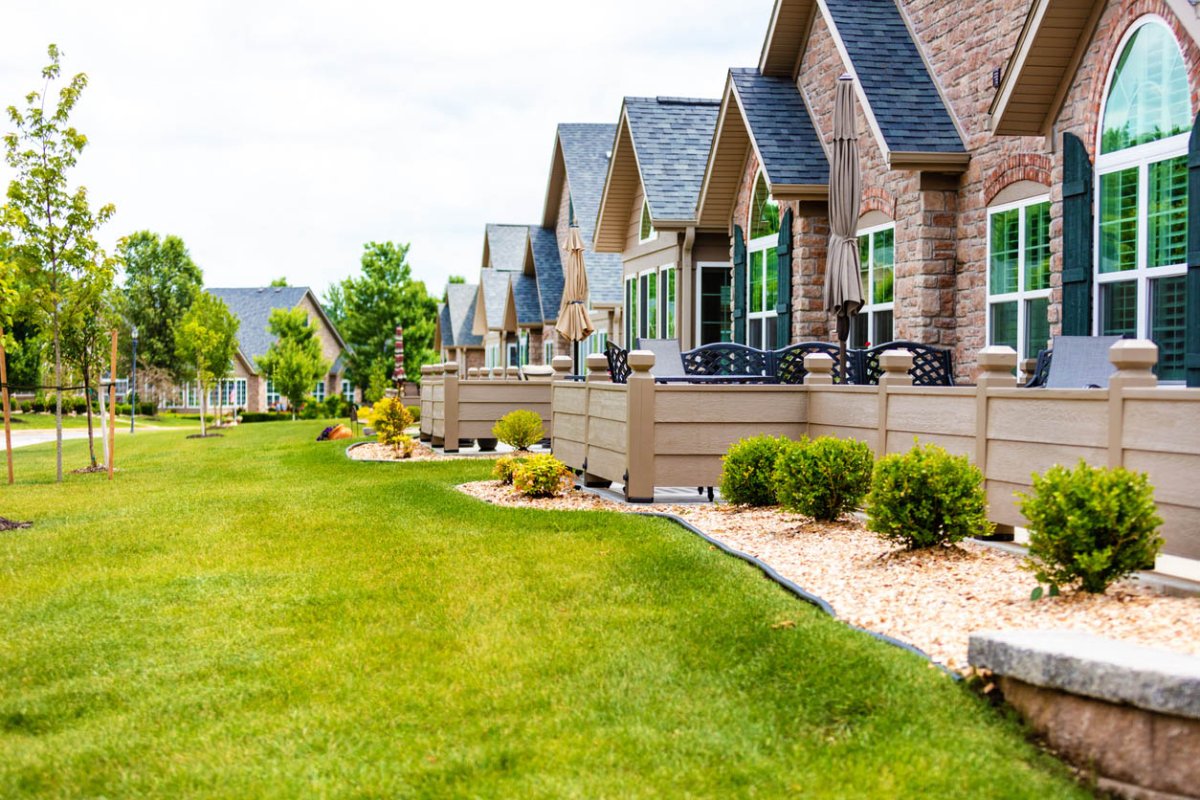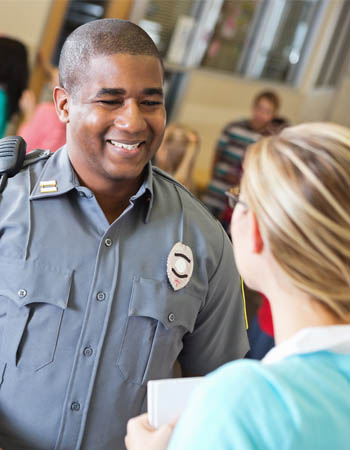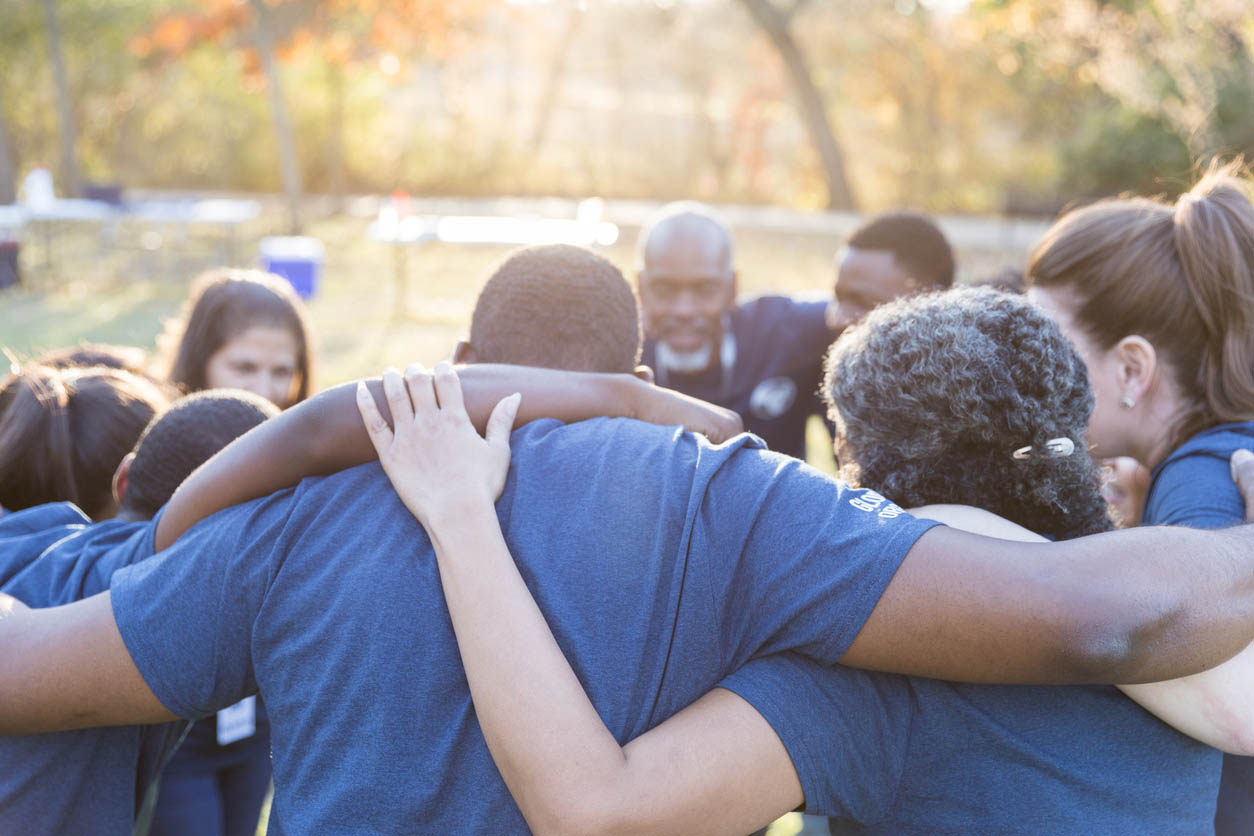

We may earn revenue from the products available on this page and participate in affiliate programs. Learn More ›
As society has turned inward, toward car travel and television and video games, the sense of security that came from chatting on front porches and knowing all of your neighbors’ business has faded. Asking your neighbor to keep an eye on your home while you’re away on vacation is a time-tested way to protect your property and increase your peace of mind. But what if you expanded that sense of security to your entire street or neighborhood? Originally, the concept of neighborhood watch was organic: Everyone would look out for their neighbors and alert the police if they saw something suspicious. Eventually that led to posting Neighborhood Watch signs to let potential criminals know that locals were paying attention to neighborhood safety, so they should take their business elsewhere. Now neighborhood watches are a formalized, organized partnership between the community members and law enforcement. And they work: The average crime reduction in an area with a neighborhood watch is 16 percent. Formal neighborhood watch programs are a way to take back the ownership and safety of your community and effect positive change in an organized way, creating a safe neighborhood that’s respectful of the needs and concerns of the residents and offers a greater sense of positivity and inclusion.
Before You Begin…

Is your community ready for a neighborhood watch? If crime is on the rise, or if the neighborhood has turned over significantly in the last few years, you may have a great audience to work with. Before you really embark on starting the neighborhood watch, you’ll want to talk up some like-minded neighbors so that you’re not organizing all on your own—with the amount of outreach you’ll need to do, it’s much easier to begin with a small group to rally support among the larger community.
Tips for How to Start a Neighborhood Watch
- Investigate. See if there are other neighborhood watch groups in your area whose leaders you could talk to about challenges they’ve faced and methods that worked well for them.
- Create a boundary based on other existing watch groups, geography, or the pattern of streets in your neighborhood, and make a rough plan for what area the neighborhood watch will encompass.
- Reach out to local law enforcement to see if they have a plan of action already in place for groups that want to start a neighborhood watch, and get the contact information for their resource or liaison officer.
Safety Considerations
- Remember that a neighborhood watch works in concert with law enforcement: The members of the group are not actually law enforcement and should be very clear on the plan of action if they see something suspicious so as not to endanger themselves or others.
- Be sensitive to the determination of what constitutes “suspicious behavior,” especially if you don’t know all of your neighbors very well. Some members may have strong feelings about law enforcement, and others may have prejudices and biases of which they may not even be aware. Especially in the initial meetings, think ahead about how to address these concerns.
STEP 1: Talk to your neighbors: Gauge interest, and recruit them to join the neighborhood watch.
Your group won’t be successful without an active commitment from most of the members. Word of mouth, email, messages on local social media neighborhood pages, flyers, and door-to-door canvassing are all methods that can be useful. Don’t over-explain; people need quick and convincing information to be drawn into your first meeting. Provide statistics about why the group is needed, how the program can help, and contact information of the organizers, along with when and where the first meeting will take place (providing refreshments and some social time at the first meeting can encourage locals to come). This should give you an idea of how many people are interested in working with the group, and if necessary, you can expand or tailor the areas you plan to include accordingly.

STEP 2: Designate leaders of the neighborhood watch.
While it would be great if everyone could just pitch in, an effective neighborhood watch program requires organization with some hierarchy. This also helps spread the organizational burden among several people so that it’s not overwhelming. You’ll need a leader or leadership team. If the area you’re covering is large, you’ll need Block Captains to manage the volunteers in smaller areas of the neighborhood—individual streets or blocks. These positions can be chosen by the organizers, elected by the larger group, or be filled by volunteers.
STEP 3: Contact your local law enforcement agency to schedule a meeting.
Many local police or sheriff’s departments already have a neighborhood watch or community liaison officer in place. These coordinators are trained to provide resources and access, and they can attend meetings and provide helpful training to the members of the watch community. It’s important to coordinate with them, because they may already have helpful resources available for neighborhood watches, can assist with training and procedures, and can help the group stay on track instead of turning into a social club or a vigilante group. Law enforcement representatives can also help the group understand what is already in place to protect the community and listen to residents’ concerns and questions.

STEP 4: Discuss the community’s concerns and formulate an action plan.
Every community is different. At the meeting, it is important for residents to share their greatest concerns and discuss those concerns with the law enforcement representative. Perhaps law enforcement feels positive about a problem they have been targeting, when residents are much more concerned about a different issue. Clarifying and really hearing the concerns of the neighborhood residents—all of them—will allow the group to make a concrete plan to address those issues that top the list first.
STEP 5: Make a communication plan.
Using social media tools is a great way to keep in touch and exchange information; most of the larger social media sites have neighborhood or local pages available to private groups. While this is a great way to centralize communication and information distribution, it’s also important to meet in person from time to time to touch base, introduce any new neighbors, and assess what is working well and which policies might need some revision.
STEP 6: Start your watch: Host meetings, events, and trainings regularly and frequently.
Starting a good neighborhood watch isn’t a one-and-done action; the group will need to meet or communicate regularly to assess what’s working, what isn’t, and adjust the plans and policies accordingly. Training is an important component of an effective group, as residents need to learn what to look for (and what isn’t a big deal). Management of crisis situations is not something most people are trained for, so working with some mental health experts and law enforcement officers can help the members of the group make the best decisions in case of a person acting erratically or endangering themselves and others.
The group has to be flexible enough to shift when necessary, so the commitment to remain engaged is important. Adding a social element to the meetings and events can help, and it will also remind members of the reason for starting the group in the first place.
You’ll want to register your watch with the National Neighborhood Watch group; this will help new neighbors who may be interested in participating find your group through a web search and signage, and the organization can provide resources for training.

Why organize a neighborhood watch?
There are a lot of benefits to a neighborhood watch, and many of them go beyond reducing crime. Feeling unsafe is often a reason that people choose to move to a different neighborhood, so the sense of community support that a neighborhood watch generates can make people feel safer, more comfortable, and more likely to stay in the area. Less frequent turnover can help increase property values, as can the reduced crime and demonstration of a connected and active community. In addition, the connection to local law enforcement has a number of benefits—opportunities for the officers to really get to know the community and their needs personally results in more comfortable relationships and better outcomes when difficult situations arise.
The neighborhood watch gives residents a sense that they can actively be responsible for the quality and safety of the neighborhood in which they live, and it grows the connections within the community. At the very least, the group will bring people together to work toward a common cause and can improve the quality of life in the area.
Are neighborhood watches effective in reducing crime?
The United States Department of Justice reports that neighborhood watch groups are part of a comprehensive approach to community safety (along with property marking and home security systems). Because there’s little consistency among the structure, organization, and policies of the groups, it’s difficult to compare them side by side and develop statistical data that shows a clear pattern. In general, however, the Department of Justice concluded that there is an overall reduction of crime in areas where an effective, organized neighborhood watch is present. The report stressed the importance of organization and coordination with law enforcement, as some designs work better than others. Overall, they concluded that crime reduction is more effective when law enforcement is assisted by the community in a variety of ways, and a well-organized neighborhood watch is one of those ways.
If you’re wondering how to start a neighborhood watch group in your area, start by talking with your neighbors. You may find that many of the residents of your neighborhood are interested in working together, and all you’ll need to do is guide. In other cases, you may face an uphill climb. Like any community group, neighborhood watches carry the risk of politics, power plays, and other problems getting in the way, which may be exacerbated if most of the neighborhood isn’t interested in the group. One thing to consider is how you’ll manage those residents who are very much in favor of the group but can’t commit to regular participation or can’t actively participate. In those cases, you can encourage homebound residents to help in whatever ways they can: making phone calls, stuffing flyers in envelopes, and keeping an eye on the neighborhood kids at the bus stop are all contributions. It’s important to include as many neighbors as you can to build the sense of community.
Starting a neighborhood watch is a commitment, but it’s one that will reward you with a sense of security in your neighborhood and a stronger community. And maybe you’ll even get to know some of the neighbors you’ve previously just waved at from the car.
If you want to increase security around your home, investing in one of the best home security systems (such as Vivint or ADT) can be beneficial in the long run. There are many home security systems to choose from, but the best provider for you will depend on your needs, budget, and desired level of security.
